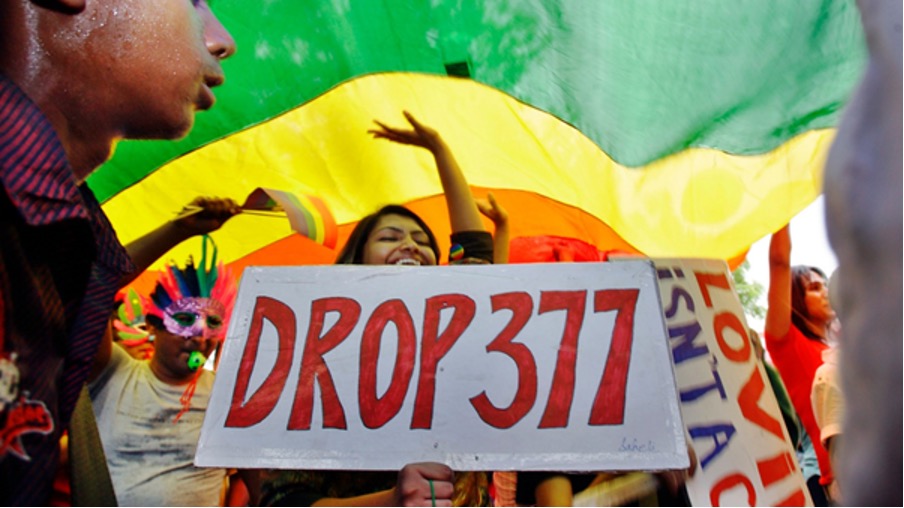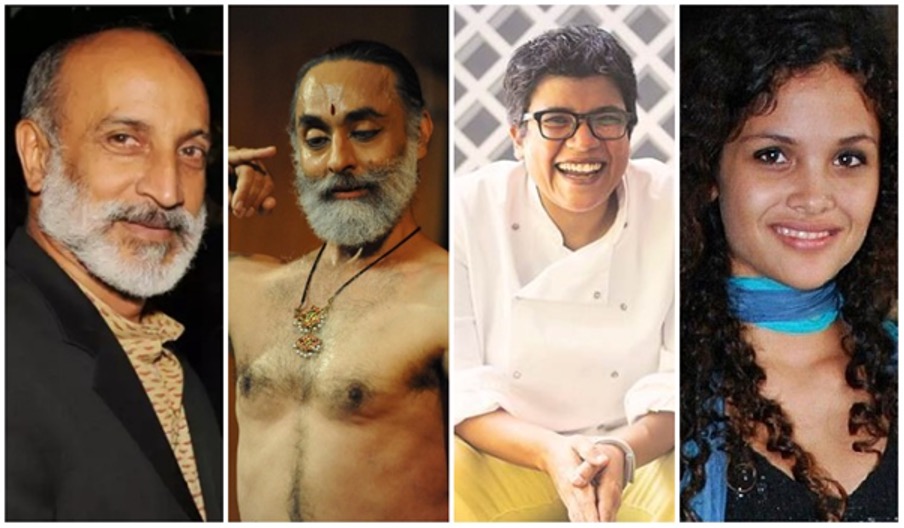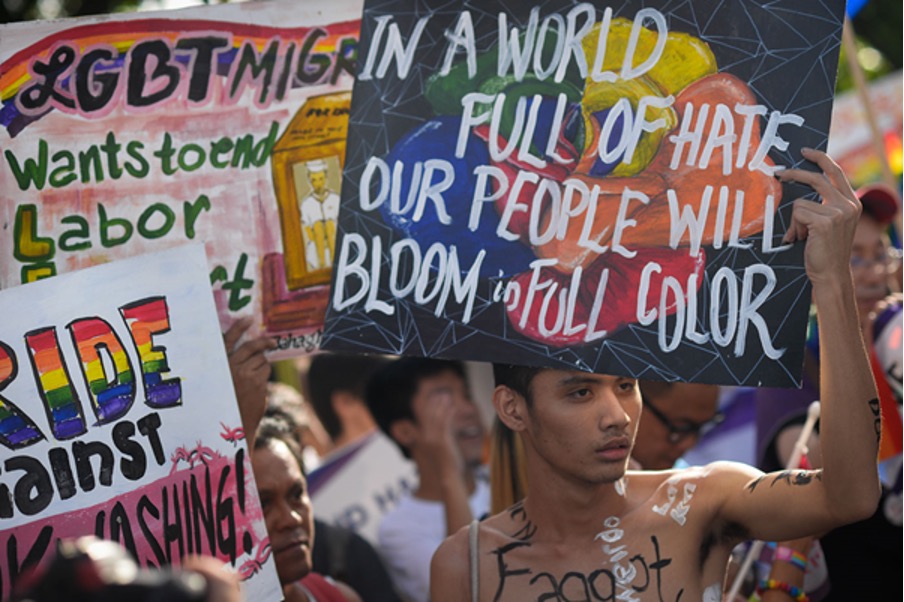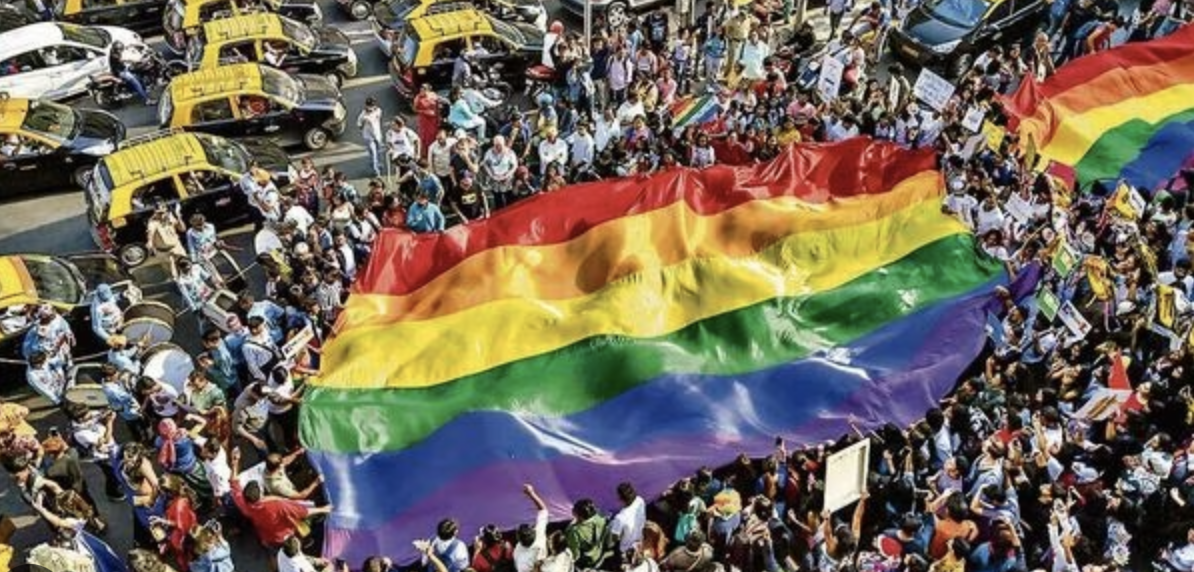Article 14 of the Indian Constitution states, “The State shall not deny to any person equality before the law or the equal protection of the laws within the territory of India.” However, we are all aware that discrimination based on factors like caste, colour, creed, and, most importantly, gender is prevalent. Combating the bigotry associated with one’s gender becomes even more challenging when one does not conform to the stereotypical cisgender heterosexual “ideals.” While many Indians have started to appreciate other sexualities, including the LGBTQ+ community, tensions still persist.
Although homosexuality has recently gained attention, it is not a new concept, and traces of it can be found in ancient Indian monuments and religious texts such as the Vedas. These texts do not impose restrictions on same-sex relationships, and many Hindu gods have been known to exhibit gender fluidity. The epic Mahabharata features the renowned character of Shikhandi. The Rigveda contains the phrase “Vikriti Evam Prakriti,” meaning “what seems unnatural is also natural.” The Kamasutra refers to lesbians as “Swarinis,” who often entered into marriages and raised children together. The “Markandeya Purana” narrates the story of Avikshita, the son of a king who refused to marry because he identified as a woman. Another vivid example is the Khajuraho temple in Madhya Pradesh, built in the 12th century, known for its explicit erotic sculptures depicting the existence of sexual fluidity between homosexuals.
In the medieval era, there were several kings and princes who faced no discrimination for being homosexuals, and society was largely tolerant towards them. Examples include Emperor Babur, who was known to be in a relationship with a boy called Baburi, and Mubarak, the son of Alauddin Khalji, who maintained intimate relationships with one of his own noblemen. So, how did the parochialism and animosity towards homosexuals originate? It is said to have begun with the advent of British rule in India. In 1861, Lord Thomas Babington Macaulay passed a law under section 377 of the Indian Penal Code, which criminalised all sexual activities “against the order of nature.” Since then, the issue of homosexuality has become very sensitive in Indian society, and political parties refuse to endorse LGBTQ+ issues in their official party manifestos due to the extreme sensitivity of the subject.

India has been comparatively much slower when compared to other countries in recognizing homosexual rights and allowing them full and open lives. As lawyer Menaka Guruswamy notes, “this is love that must be constitutionally recognized, and not just sexual acts.” The first appeal against the 1861 law was made in 1991 when AIDS Bhedbhav Virodhi Andolan released a 70-page report detailing the trauma, stress, and extortion that gay people faced in society. Later, in May 1994, controversy erupted when Kiran Bedi, the then-Inspector General of the Tihar jail, refused to provide condoms for inmates stating that “it would encourage homosexuality,” besides admitting that inmates do indulge in it. A writ petition was again raised by ABVA in the Delhi High Court, which demanded free condoms for the inmates and the decriminalisation of Section 377, but it was eventually dismissed in 2001.
In December 2001, the NAZ Foundation, a sexual health NGO working with gay men, filed a PIL in the Delhi High Court, challenging the credibility of Section 377 and calling for the legalisation of homosexuality. After being dismissed twice in 2004 and 2006, the Delhi High Court bench consisting of Chief Justice Ajit Prakash Shah and Justice S Muralidhar passed a landmark judgement in July 2009 that decriminalised homosexuality, thereby stating that it violates the fundamental rights to life, liberty, and equality as enshrined in the Indian constitution. A number of people criticised this move, and Suresh Kumar Koushal, a Delhi-based astrologer, challenged the Delhi High Court’s decision in the Supreme Court. The high court’s decision was overturned on the grounds that Section 377 should be left to be decided by the Parliament and not the Judiciary.
National award-winning Bharatnatyam dancer Navtej Singh Johar and his partner, former journalist and media editor of Maxim magazine in India, Sunil Mehra, businesswoman Ayesha Kapur, owner and founder of the Neemrana chain of hotels Aman Nath, and celebrity chef and owner of the niche restaurant chain Diva in Delhi, Ritu Dalmia, together filed a writ petition in the Supreme Court challenging Section 377 on 27th April 2016.

The bench comprising Chief Justice Dipak Misra, Justice A.M. Khanwilkar, Justice Rohinton Fali Nariman, Justice D.Y. Chandrachud, and Justice Indu Malhotra found that Section 377 violates three aspects of the Indian constitution:
i) It discriminates against individuals based on their sexual orientation, thereby violating Article 14 and 15 of the Constitution.
ii) It violates the rights to life, dignity, and autonomy of personal choice under Article 21.
iii) It inhibits an LGBT individual’s ability to fully realise their identity, by violating the right to freedom of expression under Article 19(1)(a).
They all referred to recent judgments of the Court, such as NALSA v Union of India (which recognized transgender identity) and Justice K.S. Puttaswamy v Union of India (which recognized fundamental right to privacy). On September 6, 2018, the five-judge bench unanimously dismissed Section 377 to the extent that it was now permissible for the LGBTQ+ community to engage in consensual sex. It was a joyous day for the community and their supporters but they soon realised that this wasn’t the end of the struggle; they still had a long way to go. While countries like the USA and the United Kingdom accept same- sex marriages, India does not. It seemed as if the decriminalisation recognized only the physical intimacy of the homosexuals and not their love.
On November 25, 2022, two gay couples, Supriya Chakarborthy and Abhay Dang, and Parth Phiroze Mehrotra and Uday Raj Anand, filed petitions argued that the non-recognition of same-sex marriage amounted to discrimination that undermined their dignity. The petition filed by Parth Phiroze Mehrotra and Uday Raj Anand before the Supreme Court on Friday stated they have been in a relationship with each other for the last 17 years and are raising two children together. Since they cannot legally solemnise their marriage, they are unable to establish a legal parent-child relationship with both their children. Many similar cases were pending in various high courts. A bench headed by CJI D.Y. Chandrachud directed all high courts to direct the cases to the Apex court.
Arguing for the petitioners, Senior Advocate Mukul Rohatgi pointed to Section 4 of the Special Marriage Act, which refers to a marriage in gender-neutral terms, between “any two persons”. He argued that the Court’s approval of same-sex marriage would eventually lead to broader acceptance in society. Senior Advocate AM Singhvi also noted that the same sex marriage should encompass all sexual orientations and not just the gay-lesbian binary.
The supporters of same sex marriage faced significant opposition from the Centre, represented by Solicitor General Tushar Mehta. He argued that the lawmakers had created the Special Marriage Act keeping in mind heterosexual couples, and including same-sex couples would alter the “intent” of the Act. He also objected to the inclusion of the“+” in LGBTQ , stating that it was not an identifiable group and allowing the petitioner’s appeals could have unintended consequences. The Solicitor General further claimed that the Court could not change the character of a legislation, and thus, the matter should be left to the discretion of Parliament as it involved the reinterpretation of the Special Marriage Act, 1954. As a result, the Supreme Court has reserved its judgement after a 10-day hearing of the case.

Different people have different views on their acceptance of homosexuality, and it has become a largely subjective matter. One should take note of the soul and body distinction constantly brought up in Indian philosophy as a justification for homosexuality. The soul, as stated in the Bhagavad Gita, is eternal and should not be confused with the body. It has no gender, shape or form. All the souls in the world are parts of the one and only Brahman. Since the soul has no identity, shape or form and is a part of Brahman, how can we differentiate on the basis of sexual orientation which is an aspect of the body? How can religious arguments go against its own philosophies? The struggle of the LGBTQ+ community is tough and it becomes more difficult due to the rigidity of the religious beliefs in the society. Man forgets that religion is a man-made institution but humanity is divinity.
Written by: Arzoo Kumari
Edited by Yashvi Vasani




